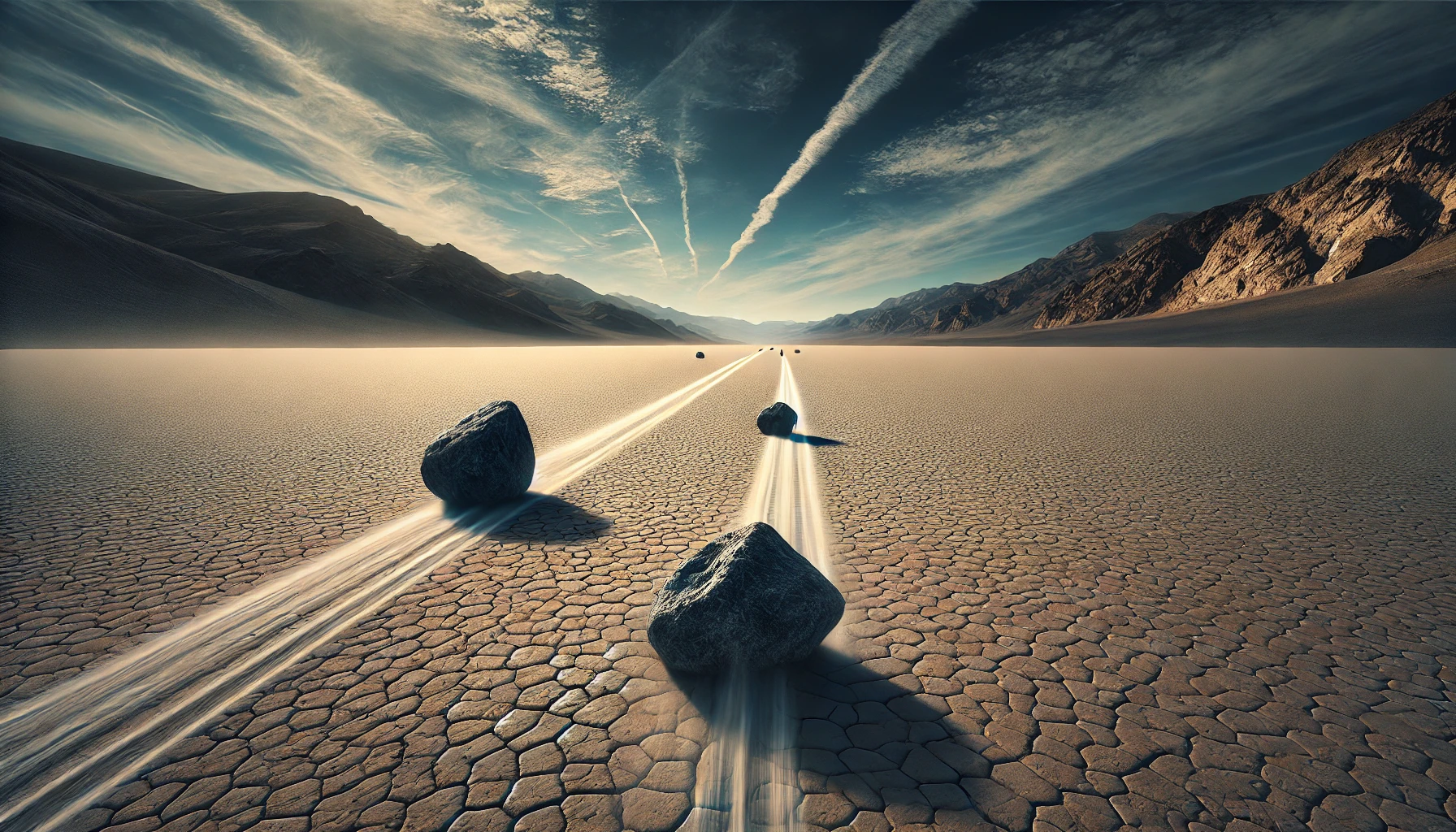Death Valley National Park is home to many natural wonders, but perhaps none as mystifying as the sliding stones of Racetrack Playa. These rocks, some weighing several hundred pounds, mysteriously move across the flat desert landscape, leaving trails behind them that puzzle both scientists and tourists.
Unraveling the Mystery
Racetrack Playa is a seasonally dry lakebed, famous for its perfectly flat surface. Here, rocks of various sizes have been found to slide across the ground, with no animal or human intervention. The phenomenon of sliding stones occurs when a perfect combination of rain, wind, ice, and natural slopes come together. Researchers have determined that under winter conditions, thin sheets of ice form around the stones, and light winds are enough to move them, leaving a slick trail in the mud.
Scientific Significance
The study of these sliding stones has helped scientists understand similar processes on other planets, such as ice floes on Mars. This research is crucial for insights into surface conditions and climate patterns in extreme environments, both on Earth and beyond.
A Photographer’s and Geologist’s Haven
The sliding stones also attract photographers and geologists from around the world, drawn by the surreal and beautiful patterns created by the moving rocks against the stark, barren landscape of the playa. The site offers a unique opportunity to capture nature’s oddities and geological phenomena in action.
Conservation and Tourism
While Racetrack Playa has become a popular site for those intrigued by its sliding stones, preserving this delicate environment is crucial. Visitors are encouraged to view the stones respectfully and without disturbing them to ensure that this phenomenon continues for future generations to study and enjoy.
Conclusion
The sliding stones of Racetrack Playa provide a fascinating glimpse into the dynamic and ever-changing nature of our planet. They remind us of the unseen forces that shape our world in subtle, yet profound ways like the Ball Lightning.

